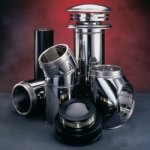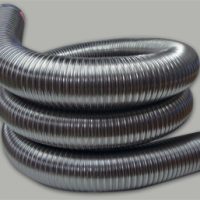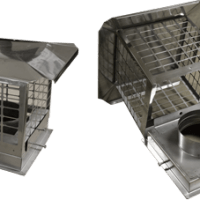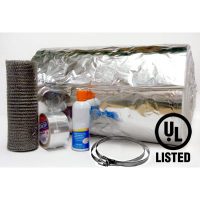Class A chimney pipe is the future of chimney systems. Class A chimney pipe utilizes a double wall technology that enables it to come within just two inches of combustible elements.

Traditional chimney stove pipe needs a clearance of 18 inches in order to safe guard combustibles from catching fire. A chimney fire is not something to take lightly. According to the National Fire Protection Association, or NFPA, heating equipment is the second leading cause of home fires, and home fire deaths and injuries. For this reason the small clearance requirements of the Class A chimney pipe, such as an Exterior Chimney System, is essential to the safety of our homes.
Who should get a class A chimney system? Anyone who wants a safe, efficient chimney, the Class A chimney system is the best choice. The stainless chimney system is ideal for home owners who have little space for a chimney. Being that it has a 2 inch clearance you can install your chimney system closer to the exterior or interior wall. Also a class A chimney eliminates the need for a traditional masonry chimney. The worries of repairing the deteriorating bricks will be a thing of the past, and in many cases repairing an old masonry system would cost you the same as installing a new, more advanced class A chimney system.
The class A chimney system has a 1 inch insulated outer wall. The insulation allows the stainless chimney system to keep a consistent temperature, thus reducing the “hot spots” common to ill-fitting insulation. A stainless chimney system manufactured in this way will have less creosote build-up, providing a safer, cleaner home heating system. Class A chimney systems are also UL rated for 2100 degrees. This means should the worst case scenario happen, a chimney fire, your chimney will be able to better withstand it.
One of the best features of a stainless chimney system is that they are very homeowner friendly. With just a few tools any homeowner can install a class a chimney system themselves. For a diagram of the layout options for a class A chimney system click here. This cuts down on the cost of home repair by at least half. This is because you only need to purchase materials, not the expensive labor required to repair a traditional masonry chimney. If you have any questions about purchasing, or installing a class A Chimney system you can call or email the chimney experts.






